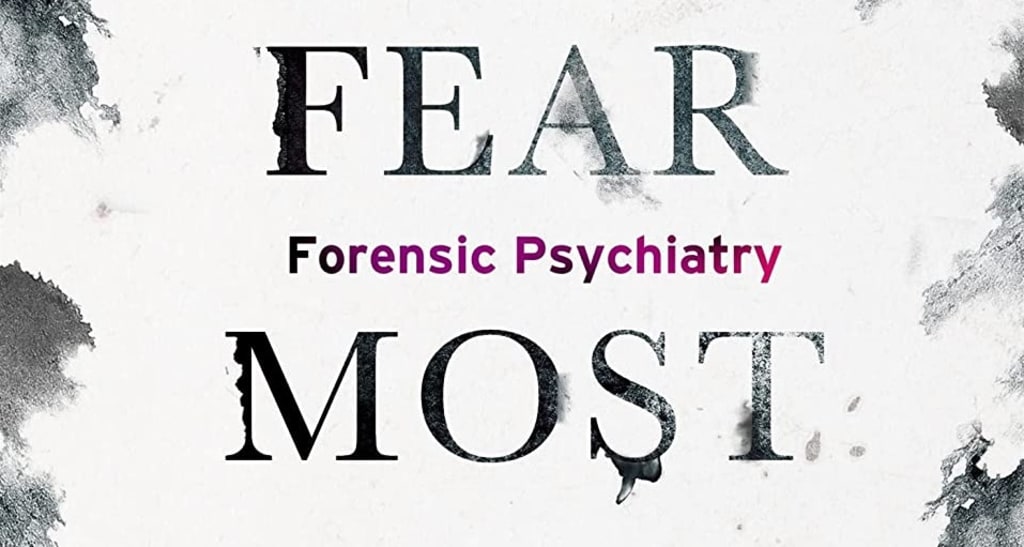What we fear most
Book review Ben Cave, What we fear most: reflections on a life in forensic psychiatry

What we fear most is a great title for a work that explores, not just a life in forensic psychiatric medicine, but the social environment that nurtures the conditions such medicine has been developed to treat. In his autobiography, Ben Cave explores and reflects on his own background and environment as much as he does that of his patients and the other people around him. Unlike most autobiographies, however, the book does not merely track the humdrum events of the subject’s lifetime. It takes a much more detailed and contextual look at the author’s life, reflecting on all he has learnt of his profession.
First published in Prison Service Journal, Issue 267, July 2023
It starts with the author’s formative years living within a dysfunctional middle-class family, and how his early experiences helped him to find his calling as a doctor specialising in psychiatry. It continues by providing an insight into some of the conditions he has treated through the experiences he has shared with his patients.
For in Cave’s work, the focus of the narrative is on the relationship between patient and psychiatrist and how this has assisted in developing a greater understanding of the conditions the author has treated over the decades. The ‘fear’ in the title is, if I understand the author correctly, one of the typical aspects of presentation noted in the book. This should be no surprise to anyone who has spent any time working in carceral environments or those who have interacted with people dealing with some form of mental distress or illness, whether diagnosed or not.
What We Fear Most has been serialised on BBC R4, available to listen now, for a few weeks only: Episode 1 - Dr Cave finds his vocation
See a person arrive in prison for the first time and you will often see fear in their eyes, their behaviour, and their interactions with others. For those convicted of a violent offence in which an unbalanced state of mind was a causal factor, the part fear may have played is all too evident in the case studies cited by Cave. These ‘cases’ are explored through conversations with the patient and the observations of one who is clearly a prominent expert in such presentations.
What we fear most is accessible and the narrative engaging. It takes the reader on a journey through the learning of one individual as they progress through knowledge gained from experience. There is undoubtedly an important element of commitment on the part of the young man who progresses through the early stages of his career in medicine. I don’t know from experience, but I can’t imagine many junior doctors voluntarily remaining overnight in a hospital after their shift has completed, for instance, to get closer to the patient and their environment.

Cave’s learning discussed in the book often comes as much through error, as it does from getting things right from the start, which adds to the humanity and accessibility of the narrative. On one occasion, for example, the younger Dr Cave prescribes certain medication for symptoms that include shaking hands, a known side-effect of medication the patient had previously been prescribed. Cave later sees the man selling the medication in a bar, clearly demonstrating that his unwitting doctor has ‘been had’.
There are thankfully more examples of Cave getting it right than getting it wrong. Although one might expect an element of self-congratulation in an autobiography such as this (one reason I don’t often read them) Cave’s examples appear to be genuinely illustrative. They help the reader gain insight into some of the clinical conditions discussed in the book.
If the book is an accurate depiction of the author’s experiences and relationships with patients, it is one that provides a model of empathy and emotional intelligence. Cave, it transpires, is not afraid of forming an emotional connection with a patient. On the contrary, it seems that, during his career, Cave has embraced the need to connect with his patients and clearly found it as clinically informative as it was emotionally satisfying.
Crying together with a distressed patient for instance. Or in understanding that, by successfully treating a patient who was convicted of killing her own child, he also brought to her the realisation of the enormity of what she had done. “So, this [knowledge of what she had done] is my punishment?” the patient asks him. Would it have been kinder to the patient to leave her in blissful ignorance of her actions or was it more important to treat her and bring her the realisation, not just of the reality of her actions but also (Cave hopes) the understanding that they resulted from an illness and (in light of the theme of the book) from an incapacitating fear.
This book also includes some very useful reminders, such as the rarity of a successful plea of insanity. Given media perceptions of mental illness being used as an ‘excuse’ for some crimes, it provides a timely reminder that few people escape conviction for a violent offence simply because of their clinical condition. Experiences discussed in the book include providing clinical evidence to courts and tribunals. Not all his patients were offenders, however, and each of the people (suitably anonymised) and their conditions discussed helps to provide understanding of their presentation and the importance of ‘fear’ to many clinical conditions.
One of the ‘cases’ Cave discusses deals with the difficult subject of the person’s ultimate suicide. Not an offender, not a patient, but a clinical colleague. A harrowing account that provides a useful reminder of our responsibility to listen to those around us and to give them the care and support they need when it is needed most. It is also a timely reminder of the thin line that may be drawn between those of us who are recognised as having a clinical mental disorder and those who live without the kind of help that may be provided by an appropriate diagnosis and treatment.
Highly readable and certainly more accessible than your average book about psychiatry, What we fear most is packed with anecdotes and little Quality-Street-wrapped excerpts from Cave’s life and career as a psychiatrist.
Ben Cave, What we fear most, is available in hardback and paperback.
This review was first published in Prison Service Journal, 267, July 2023
If you liked this review, you might also like: A horseman in the sky
About the Creator
Raymond G. Taylor
Author based in Kent, England. A writer of fictional short stories in a wide range of genres, he has been a non-fiction writer since the 1980s. Non-fiction subjects include art, history, technology, business, law, and the human condition.
Reader insights
Outstanding
Excellent work. Looking forward to reading more!
Top insights
Expert insights and opinions
Arguments were carefully researched and presented
On-point and relevant
Writing reflected the title & theme






Comments (2)
Raymond, your book review was a welcomed perspective on the compassionate aspects of carceral life. I applaud you! I have no doubt that we have also witnessed what happens in that world with the absence of compassion. Dr. Ben Cave seems to be a fascinating author. Thank you for introducing him! BTW: I think I shared that I will be away from Vocal for a while, due to career demands. Please know that I have enjoyed your writings, and take care! :)
Thorough review that still leaves me wanting to read more.